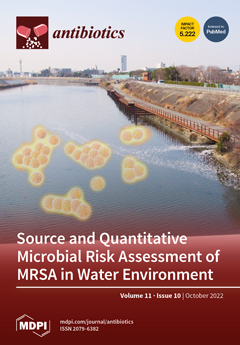Staphylococcus aureus represents a notorious opportunistic pathogen causing various infections in biofilm nature, imposing remarkable therapeutic challenges worldwide. The catabolite control protein A (CcpA), a major regulator of carbon catabolite repression (CCR), has been recognized to modulate
S. aureus biofilm formation, while the
[...] Read more.
Staphylococcus aureus represents a notorious opportunistic pathogen causing various infections in biofilm nature, imposing remarkable therapeutic challenges worldwide. The catabolite control protein A (CcpA), a major regulator of carbon catabolite repression (CCR), has been recognized to modulate
S. aureus biofilm formation, while the underlying mechanism remains to be fully elucidated. In this study, the reduced biofilm was firstly determined in the
ccpA deletion mutant of
S. aureus clinical isolate XN108 using both crystal violet staining and confocal laser scanning microscopy. RNA-seq analysis suggested that
sak-encoding staphylokinase (Sak) was significantly upregulated in the mutant ∆
ccpA, which was further confirmed by RT-qPCR. Consistently, the induced Sak production correlated the elevated promoter activity of
sak and increased secretion in the supernatants, as demonstrated by P
sak-
lacZ reporter fusion expression and chromogenic detection, respectively. Notably, electrophoretic mobility shift assays showed that purified recombinant protein CcpA binds directly to the promoter region of
sak, suggesting the direct negative control of
sak expression by CcpA. Double isogenic deletion of
ccpA and
sak restored biofilm formation for mutant ∆
ccpA, which could be diminished by
trans-complemented
sak. Furthermore, the exogenous addition of recombinant Sak inhibited biofilm formation for XN108 in a dose-dependent manner. Together, this study delineates a novel model of CcpA-controlled
S. aureus biofilm through direct inhibition of
sak expression, highlighting the multifaceted roles and multiple networks regulated by CcpA.
Full article






